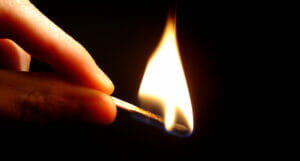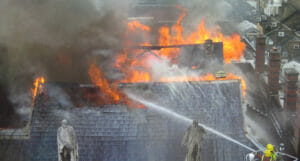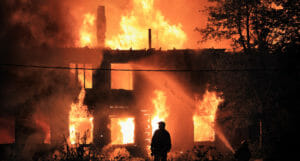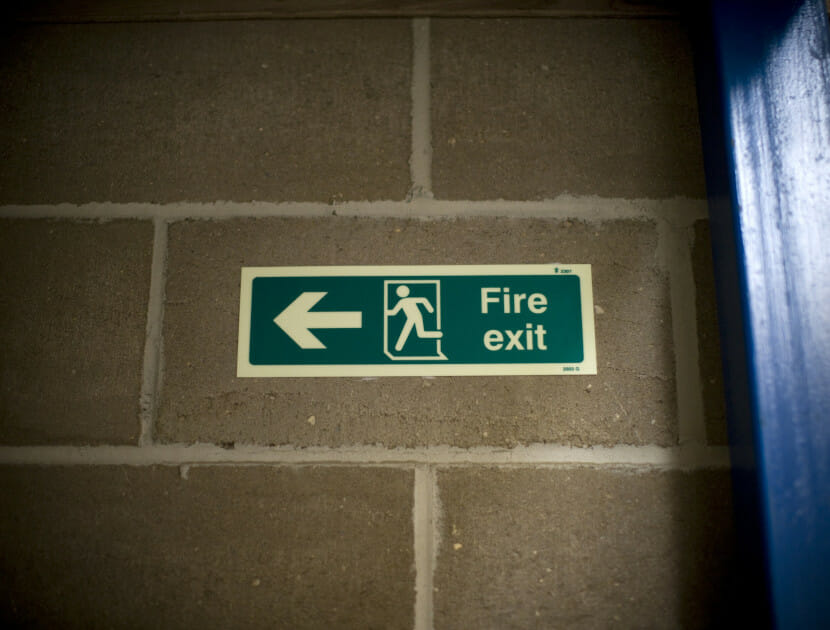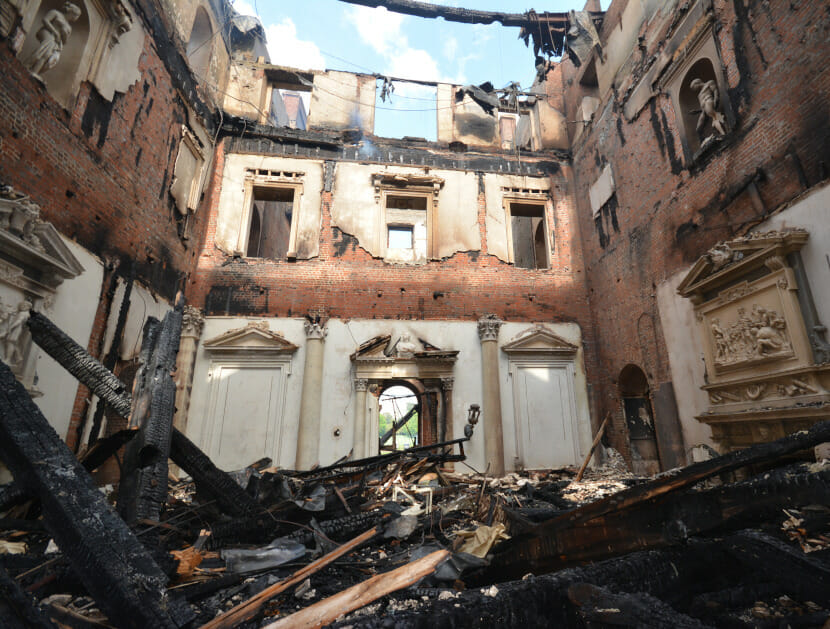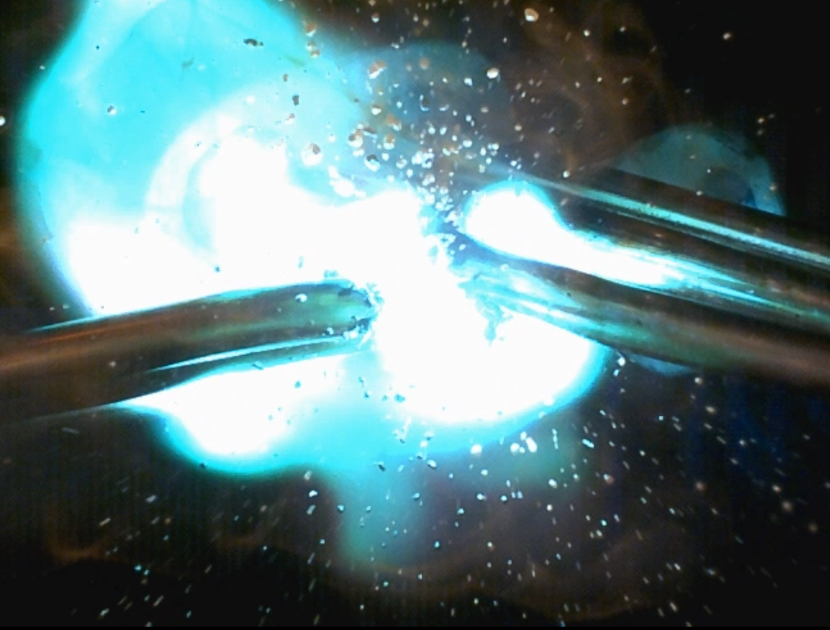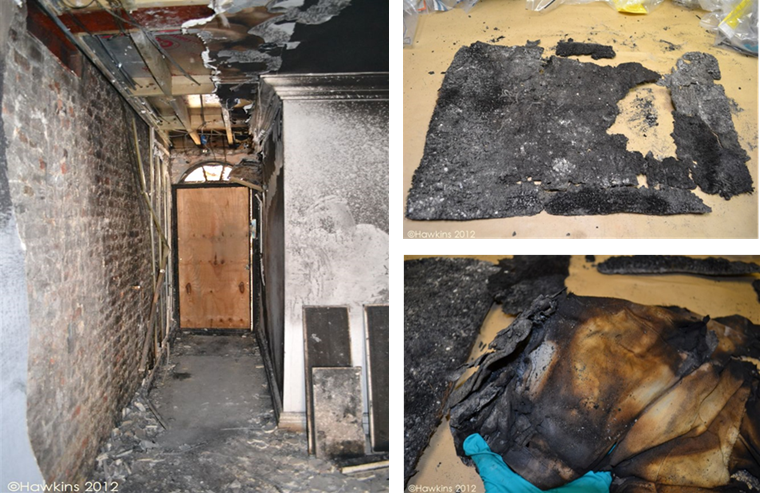Fire Stop & Spread
The spread of a fire within a building, or to an adjacent property, can have a significant impact on the safety of occupants and on the financial implications – both in terms of the remediation of the property and loss of business. The insufficient consideration of passive and active fire protection during initial design and construction and during occupation of a building, can result in fire spread which causes damage which could have otherwise been limited had the proper provisions been implemented and maintained.
Hawkins’ experts can provide advice prior to a loss and can also investigate fire spread and the potential impact of building defects or poor maintenance after a fire. Many of the fires that our experts investigate result in fire spread to neighbouring premises or properties. The spread of a fire can appear to be disproportionate, and the speed and routes by which a fire has spread can sometimes appear to be unexpected. In these situations, Hawkins is often asked to investigate the factors that may have contributed to the extent of fire spread.
Typically, the fire safety requirements of building regulations in many jurisdictions incorporate aspects which aim to limit the spread of fire to a degree that is appropriate for the type and occupancy of a building. For example, this might include provisions to resist or limit:
- internal fire spread within a building;
- external fire spread across the external surfaces of a building; and,
- external fire spread from one building to another.
To achieve this, many buildings incorporate fire-resisting walls and floors at select locations and where these are provided, any gaps or openings in the construction should be adequately protected (e.g. using ‘fire doors’ or ‘fire-stopping’ at the location of service penetrations). In addition, the external walls and surfaces should not contribute to undue fire spread where this would be a risk to occupants. Furthermore, the need to reduce the potential for fire spread from one building to another can also sometimes influence the design and position of both internal and external fire-resisting walls and floors and the orientation/location of buildings.
Our experts include qualified engineers and architects with experience in the design, construction and management of fire protection provisions in a variety of buildings, including high-rise residential. This allows them to understand the likely original design intentions of the fire safety provisions, and how changes such as new building work, refurbishment, extension, or a change in use might impact the original strategy.
In addition, invaluable experience gained from visiting buildings following real fire incidents also consolidates our experts’ understanding of fire behaviour and assists in their assessment of the potential impacts of not only design and construction defects, but also poor management and maintenance.
WHY APPOINT A FORENSIC INVESTIGATOR?
We are able to offer fire protection advice including, but not limited to:
- Review of the design and construction documentation to determine whether regulatory requirements in relation to fire safety and/or client project-specific aims are met.
- Inspection of the completed building to determine whether it has been built in accordance with the design drawings and to the relevant regulatory requirements, guidance and standards. This includes identification of deficiencies in the design, construction, or maintenance of fire protection provisions.
In addition to identifying the cause of the fire, our experts can also assist in a variety of other ways after a fire, including, but not limited to:
- Identification of deficiencies in the design, construction, or maintenance of fire safety provisions in a building, which may have contributed to the spread of the fire through the building, or to neighbouring buildings.
- Review of the adequacy of design and construction stage fire safety and fire protection provisions, such as means of warning (fire alarm and detection), means of escape, the potential for fire to spread within the building and to neighbouring buildings, and the adequacy of access provisions for the Fire Service and facilities for their use.
- Advice on repair/remedial works.
- Our architects can review building contracts, consultant appointments and performance specifications to aid with determining who was responsible for each package of work.
Our specialists can provide expert witness testimony if the case proceeds to Court:
- We support subrogation/recovery efforts.
- We help you to make decisions and provide assistance in establishing where legal responsibility/liability lies.
- We help you to defend wrongful claims.
- We provide expert advice with regards to criminal proceedings under safety regulations (e.g. under the Regulatory Reform (Fire Safety) Order and Fire Safety Act).
- We produce reports suitable for Court and litigation.

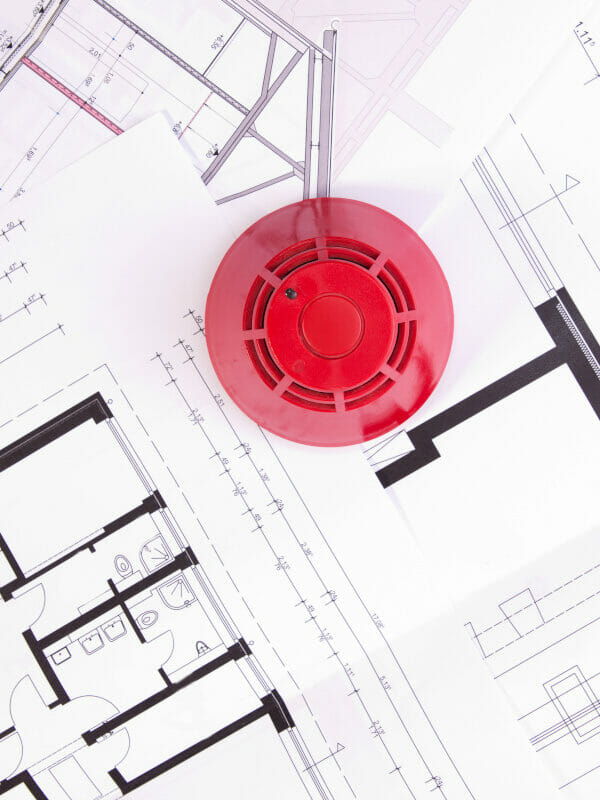

Examples of Typical cases
The list below provides a few examples of cases which we investigate regularly or have investigated in the past.
- The review of evidence from a fire investigation (e.g. CCTV recordings and witness statements), and of design documentation and compliance with the relevant legislation, statutory guidance and applicable standards
- Investigation of fire spread over fire resisting compartment walls in roof voids
- Investigation of fire spread past fire resisting cavity barriers within external wall voids
- Investigation of fire spread within external façade materials during refurbishment activities
- Investigation of fire-stopping works provided at the time of construction of residential blocks of flats, including a review of subsequent remedial works carried out
- Investigation of fire spread through fire resisting compartment floors via service shafts
- Investigation of external wall fire safety provisions in high-rise residential buildings
- Assistance in criminal proceedings relating to the adequacy of the fire risk assessment undertaken as part of the Regulatory Reform (Fire Safety) Order 2005
HOW DOES HAWKINS INVESTIGATE FIRE PROTECTION PROVISIONS AND FIRE SPREAD?
1
Consultation
We like to discuss the case with you before we conduct any work, to establish how we can add value. These discussions help us to understand your requirements, as well as determining how much information is already available, including for example, information relating to fire safety provisions, system specifications, service and maintenance records, first-hand witness accounts, photographs, and videos.
2
Inspection
We are happy to provide you with an estimate of the cost of conducting a forensic investigation. If required and with your agreement, we will arrange to visit the scene to inspect the building and/or scene of the fire. We can determine with your assistance the best possible ways to inspect the building and carry out the necessary forensic investigations.
Wherever possible and relevant to the case, we will retain exhibits for examination. By retaining materials from the scene of a fire or an undamaged building, we are provided with a future opportunity to test and examine using a range of equipment, tools and tests. This could include fire testing carried out by third party laboratories to specified standards and industry guidance.
3
Conclusion
Once our examination is complete, we aim to discuss our findings with you and prepare a report containing a detailed account of our investigation, conclusions, and where appropriate, expert opinion, further work or advice.
SPEAK TO ONE OF OUR EXPERTS
Related areas of expertise
Insurance Fraud
Hawkins investigators can investigate a range of incidents relating to fraud, from major losses such as a deliberately set fire in a large factory or contamination of bulk cargo, through to minor losses involving accidental damage or a staged disappearance of insured items from a house.
Data Recovery
Given the prevalence of technology in the world today, there is a huge increase in data being lost, deleted, or corrupted. We truly understand the importance of data and the personal and commercial consequences of losing access to it.
Building Fires
Fires occurring within buildings will often result in significant damage to both the structure and contents. If you are dealing with a building fire and want to know what has caused it, you need a forensic investigator.
Fire & Explosions
At the heart of fire and explosion investigations is the interpretation of patterns of fire damage, and the consideration of other physical evidence. Hawkins’ investigators are highly experienced in piecing together the varied aspects of physical evidence to uncover the seat or seats of a fire.



